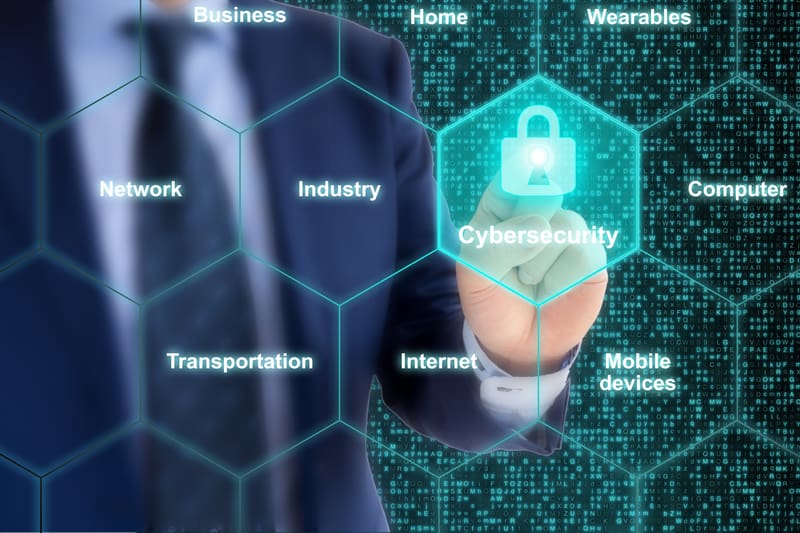In our rapidly evolving digital landscape, cybersecurity has become a paramount concern. The acceleration of digital change, fueled by advancements in technology and a shift toward cloud-based services, has significantly expanded the attack surface for cyber threats. This change underscores the need for organizations to adopt proactive approaches to cybersecurity.
The Evolving Cyber Threat Landscape
The digital age has ushered in a new era of cyber threats. The sophistication of cyber attacks is escalating, with adversaries employing advanced techniques such as artificial intelligence (AI) and machine learning (ML) to bypass traditional security measures. Ransomware attacks have become more prevalent, targeting critical infrastructure and causing significant disruptions. The proliferation of Internet of Things (IoT) devices has also introduced new vulnerabilities, expanding the avenues for cyber attacks.
In response to these evolving threats, governments and organizations are continuously updating their security protocols and investing in new technologies. This has led to the emergence of a multi-billion dollar cybersecurity industry, with companies offering various solutions such as threat intelligence platforms, network security tools, and cloud-based security services.
The Importance of Proactive Cybersecurity
Proactive cybersecurity involves anticipating potential threats and implementing measures to prevent them before they occur. This approach contrasts with reactive strategies, which focus on responding to incidents after they have happened. Proactive measures include risk assessments, continuous monitoring, and threat intelligence. These strategies enable organizations to identify and mitigate vulnerabilities, thereby reducing the likelihood of successful cyber attacks.
Proactive cybersecurity is becoming increasingly important in today’s digital landscape, where cyber attacks are on the rise and becoming more sophisticated. In fact, according to a report by Risk Based Security, there were over 5,000 reported data breaches in 2019 alone, exposing billions of records. This highlights the need for organizations to be proactive in their approach to cybersecurity.
Key Proactive Cybersecurity Measures
- Risk Assessment and Management: Conducting regular risk assessments helps organizations identify and evaluate potential vulnerabilities in their systems. This process involves analyzing the likelihood and impact of various threats, enabling organizations to prioritize their cybersecurity efforts. One of the most common methods used for risk assessment is the NIST Framework. Developed by the National Institute of Standards and Technology, this framework provides a structured approach to managing cybersecurity risks. It has become widely adopted by organizations around the world as it offers a flexible and customizable method to assess and manage risks.
- Threat Intelligence: Staying informed about the latest cyber threats is crucial. Threat intelligence involves gathering and analyzing information about emerging threats and attack methodologies. This knowledge enables organizations to adapt their defenses in line with evolving threats. Threat intelligence is an important aspect of cybersecurity that helps organizations in staying informed about the latest cyber threats. With the rapid evolution and increasing sophistication of cyberattacks, it has become essential for businesses to gather and analyze information about emerging threats and attack methodologies.
- Employee Training and Awareness: Human error remains a significant factor in many cyber incidents. Training employees in cybersecurity best practices and raising awareness about common threats, such as phishing attacks, can significantly reduce the risk of security breaches. Organizations should regularly conduct training programs for all employees, from top-level executives to entry-level staff. A key aspect of employee training and awareness is keeping up with the rapidly changing landscape of cybersecurity. As technology evolves, so do cyber threats, making it crucial for organizations to update their training programs regularly. This can include reviewing and revising policies and procedures, as well as providing ongoing training and resources to employees.
- Implementation of Advanced Technologies: Leveraging advanced technologies like AI and ML can enhance cybersecurity defenses. These technologies can detect and respond to threats more rapidly and accurately than traditional methods. The use of artificial intelligence (AI) and machine learning (ML) in cybersecurity has been growing rapidly in recent years. With the increasing frequency and complexity of cyber attacks, organizations are turning to advanced technologies to defend against these threats. AI and ML offer many benefits that traditional methods cannot match.
- Regular System Updates and Patch Management: Keeping software and systems up to date is essential in protecting against known vulnerabilities. Regular updates and patch management are critical components of a proactive cybersecurity strategy. These updates and patches fix known security flaws, improve system performance, and add new features. They are typically released by software developers or operating system providers. Updates can include bug fixes, security enhancements, and compatibility improvements. Patches address specific issues in software or systems that are identified after release. Both updates and patches are crucial in keeping your devices and networks secure.
- Incident Response Planning: While prevention is the primary goal, having a robust incident response plan is vital. This plan should outline the steps to be taken in the event of a cyber attack, ensuring a swift and coordinated response. Incident response planning is a crucial aspect of cybersecurity. It helps organizations prepare for and respond to cyber attacks efficiently and effectively. The main goal of incident response planning is to minimize the damage caused by a security breach and reduce the recovery time. A successful incident response plan includes identifying potential threats, assessing their impact and likelihood, defining roles and responsibilities, establishing communication protocols, and implementing a step-by-step response procedure. It should also include post-incident activities such as analyzing the root cause of the attack and implementing corrective measures to prevent future occurrences.
Challenges in Implementing Proactive Cybersecurity
Implementing proactive cybersecurity measures is not without challenges. These include the need for significant investment in technology and personnel, the complexity of managing a vast array of security tools, and the difficulty in staying abreast of rapidly evolving cyber threats. The integration of cybersecurity into business processes and decision-making can be challenging for organizations that lack a mature security culture. Proactive cybersecurity often requires a shift in mindset from reactive to proactive, which can be difficult for some organizations to adopt.
Another significant challenge in implementing proactive cybersecurity is the shortage of skilled personnel. The demand for cybersecurity professionals far outweighs the supply, leading to a skills gap that many organizations struggle to fill. This problem is compounded by the constantly evolving nature of cyber threats, which requires ongoing training and education for cybersecurity professionals to stay current.
Implementing proactive cybersecurity measures can also face resistance from within an organization. This may be due to internal politics, a lack of understanding or awareness of the importance of cybersecurity, or simply resistance to change. In some cases, there may also be pushback from employees who view increased security measures as burdensome and hindering their productivity.
The Role of Leadership in Cybersecurity
Leadership plays a critical role in fostering a culture of cybersecurity. Executives and board members must understand the importance of cybersecurity and allocate appropriate resources to it. They should also champion cybersecurity initiatives and ensure that they are integrated into the organization’s overall strategy. But beyond these top-level responsibilities, there are other ways in which leadership can drive cybersecurity efforts.
One important aspect of leadership is setting the tone from the top. This means that leaders must not only talk about the importance of cybersecurity but also demonstrate it through their actions. This includes following proper security protocols and being vigilant about potential cyber threats. When employees see their leaders taking cybersecurity seriously, they are more likely to prioritize it in their own work.
Case Studies
Several organizations have successfully implemented proactive cybersecurity strategies. For instance, a major financial institution employed AI-driven security solutions to detect and respond to threats in real time, significantly reducing the incidence of cyber-attacks. Another example is a healthcare provider that implemented a comprehensive employee training program, drastically reducing incidents related to human error. These case studies highlight the effectiveness of proactive cybersecurity measures in protecting organizations from cyber threats.
There have also been instances where organizations have suffered major security breaches due to a lack of proactive measures. The Equifax breach in 2017 is a prime example of this, where the sensitive personal information of over 147 million individuals was compromised. This incident serves as a wake-up call for organizations to take proactive cybersecurity measures seriously and invest in robust security solutions.
One of the key factors that determine the success of proactive cybersecurity strategies is regular risk assessments. By identifying potential vulnerabilities and threats, organizations can proactively address them before they are exploited by hackers.
Conclusion
Staying ahead of the curve in cybersecurity requires a proactive approach. This strategy involves anticipating and preparing for potential threats, rather than merely reacting to them. By embracing proactive measures such as risk assessment, threat intelligence, employee training, advanced technologies, regular updates, and incident response planning, organizations can significantly enhance their cybersecurity posture. In the age of rapid digital change, it is more important than ever for organizations to prioritize cybersecurity and adopt a proactive stance to protect their digital assets and maintain trust with their stakeholders.
In today’s fast-paced digital world, the importance of robust cybersecurity measures cannot be overstated. Contact us today to ensure your organization’s safety, resilience, and readiness for the challenges of tomorrow.



